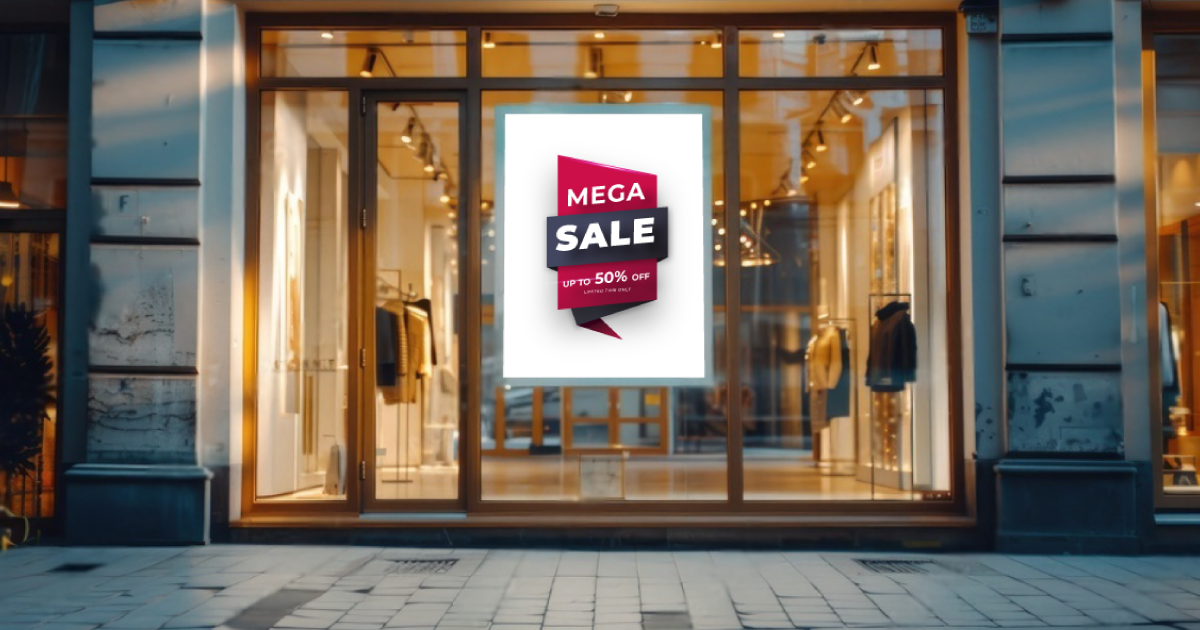In the evolving world of advertising and customer engagement, businesses are constantly seeking innovative ways to capture attention and deliver messages effectively. Signage plays a pivotal role in this endeavour, serving as a silent ambassador for brands and a guide for consumers.
The choice between dynamic digital signage and static signage is a critical decision for businesses aiming to maximize their return on investment (ROI). Here in this blog, we will explore the advantages and limitations of both signage types, their real-world applications, and their impact on ROI.
Static signage, the traditional mainstay of advertising, is known for its simplicity and durability. It’s a one-time investment that can withstand harsh weather conditions and requires minimal maintenance.
Static signs are practical in small and confined spaces and are a suitable choice for businesses with limited budgets or for targeting an older, less tech-savvy audience. They are straightforward to set up, often installed by the users themselves, which can save on labour costs.
However, static signage has its drawbacks. Its lack of flexibility means that any content updates necessitate complete replacement, which can be costly and time-consuming. The non-interactive nature of static signs also means they cannot capture consumer data or engage customers as effectively as dynamic signage.
Moreover, static signs can be easily overshadowed by the more visually compelling dynamic displays. Frequent content changes can lead to escalating costs, making static signage less cost-effective in the long run.

Dynamic digital signage stands out with its ability to update content in real time, allowing businesses to adapt quickly to changing circumstances and market trends. This flexibility is invaluable for promoting time-sensitive offers or customizing messages to enhance customer relevance.
The interactive features of dynamic signage, such as touchscreens and QR codes, invite customers to engage with the content, providing a more immersive experience.
This engagement is further amplified by the use of advanced technologies like gesture recognition and interactive AR displays, which merge virtual elements with the real world for an even more captivating experience.
Dynamic signage offers unparalleled flexibility in messaging and targeting. Businesses can deliver personalized messages to specific audiences or locations, making the content more relevant and effective.
This adaptability extends to various industries, from retail to healthcare, where dynamic signage can serve multiple purposes, from advertising to providing real-time updates and health tips.
Case Western Reserve University has embraced dynamic signage by integrating a multi-story video wall into its central space, enhancing the educational environment and student engagement.
Centene Corporation has transformed its headquarters’ lobby with dynamic signage, using it as a storytelling medium to communicate its brand narrative and values.

While the initial investment in dynamic signage is higher than static signage, the long-term cost savings and increased sales potential make it a more cost-effective choice. Dynamic signage eliminates the need for physical replacements, reducing the costs and time associated with updating static signs.
Dynamic signage’s real-time content updates and targeted messaging capabilities allow businesses to stay relevant and responsive to consumer needs, which is crucial for maintaining customer interest and driving sales.
Dynamic signage has proven its versatility across various industries, from retail to transportation, by enhancing customer experiences and providing valuable information. Its ability to adapt to different settings and purposes contributes to a higher ROI compared to static signage.
In the comparison of dynamic versus static signage, dynamic signage emerges as the superior choice for businesses seeking a better ROI.
Its engaging, interactive, and flexible nature allows for real-time updates, targeted messaging, and a more immersive customer experience.
While static signage may be suitable for certain situations, the long-term benefits and cost-effectiveness of dynamic signage make it a more strategic investment for businesses aiming to thrive in a competitive market.
To get better insights into both dynamic and static signage, you can contact Signworld Group experts.

At Signworld Group, we take pride in being an ISO 9001-2015 Quality Accredited and Audited signage company,
Working Together,to create something unique
The latest news, articles and resources, sent to your inbox monthly.
Let Us Design a Bespoke Signage for You.
At Signworld Group, we’re more than just sign makers! We are your creative partners in bringing your brand’s story to life. Whether you’re envisioning vibrant digital displays or elegant static signs, we’re here to turn your ideas into reality. Our team is ready to guide you through every step of the process with expertise and care.


Newgate House, Broughton Mills Rd, Bretton, Chester CH4 0BY, United Kingdom
Copyright Signworld Group 2024| Privacy Statement
All Fields mark with * are required

At Signworld Group, we’re more than just sign makers! We are your creative partners in bringing your brand’s story to life. Whether you’re envisioning vibrant digital displays or elegant static signs, we’re here to turn your ideas into reality. Our team is ready to guide you through every step of the process with expertise and care.
All Fields mark with * are required